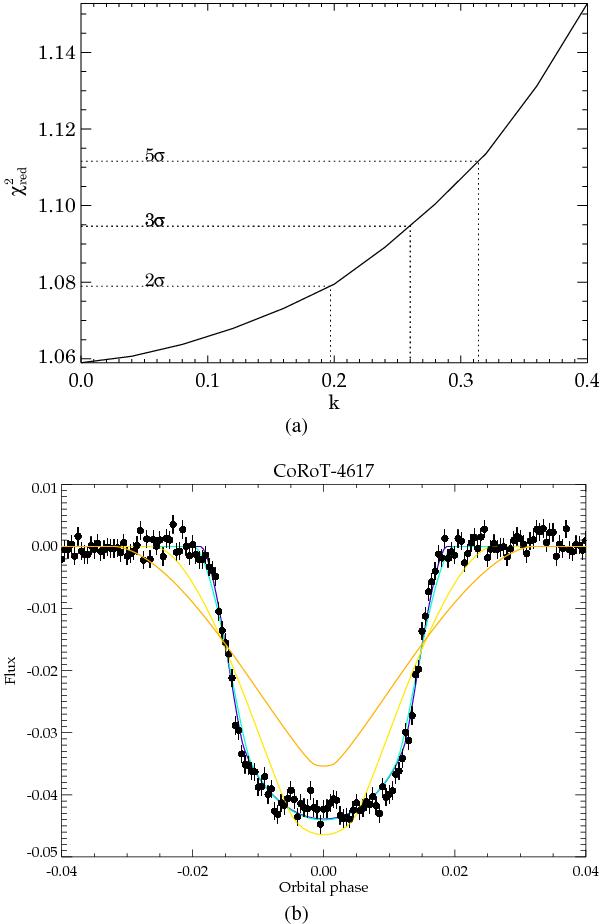Fig. 7

Panel a): the reduced χ2 as function of blended light fraction k. The horizontal dashed line shows the 2,3 and 5σ rejection criteria. Our lightcurve model directly indicates an early type main sequence stellar host, with a 2σ upper limit for blended light of k ~ 20%. The low stellar density implies a large secondary radius, rejecting the planet hypothesis. Panel b): best fitting EB models with blended light fraction k = [0.2,0.5,0.90,0.95], clearly showing that solutions with low k are favoured. Note that an orbit with an eccentricity of e = 0.5, orientated in the right way, could increase the estimated stellar density to that of the Sun, and decrease R2 to 2 RJup. This ambiguity can be easily removed by taking a single spectrum of the star, resolving its spectral type.
Current usage metrics show cumulative count of Article Views (full-text article views including HTML views, PDF and ePub downloads, according to the available data) and Abstracts Views on Vision4Press platform.
Data correspond to usage on the plateform after 2015. The current usage metrics is available 48-96 hours after online publication and is updated daily on week days.
Initial download of the metrics may take a while.




